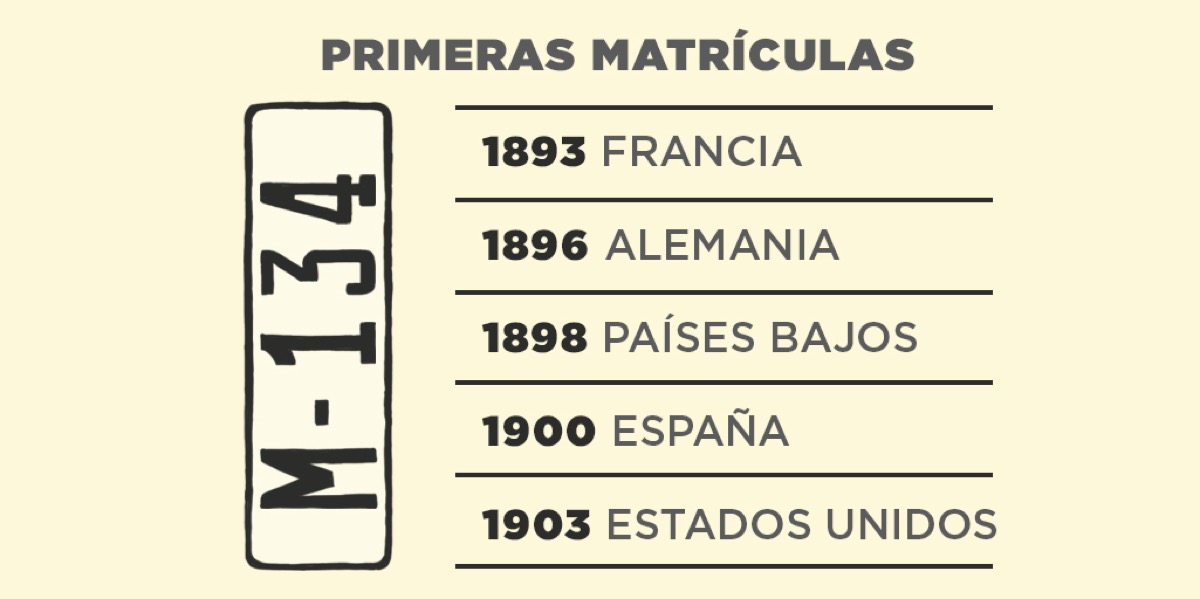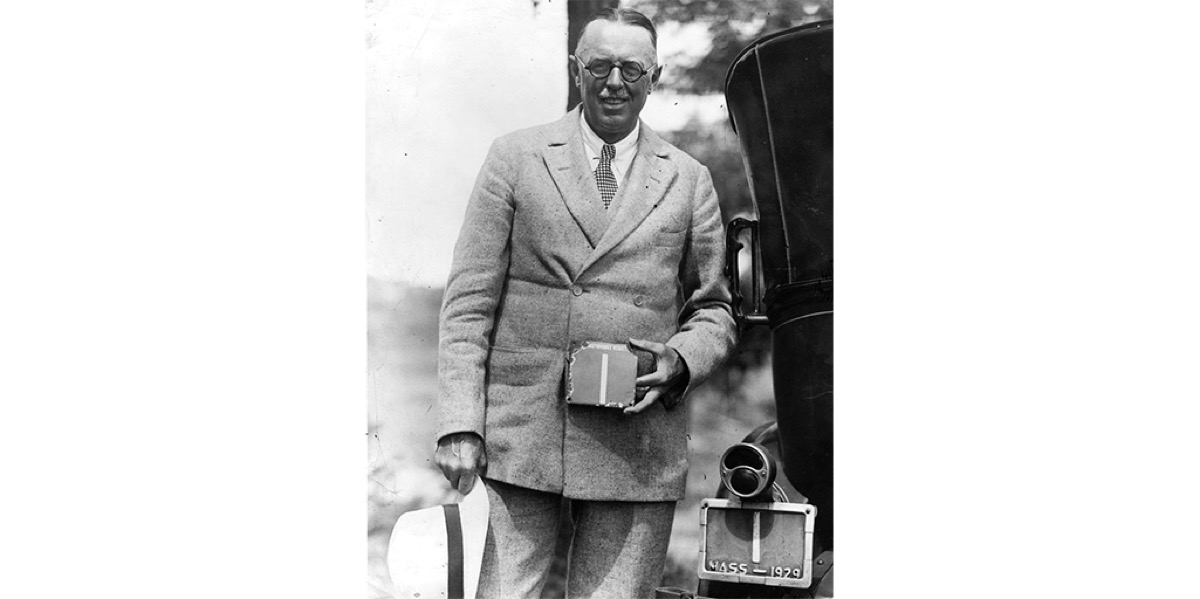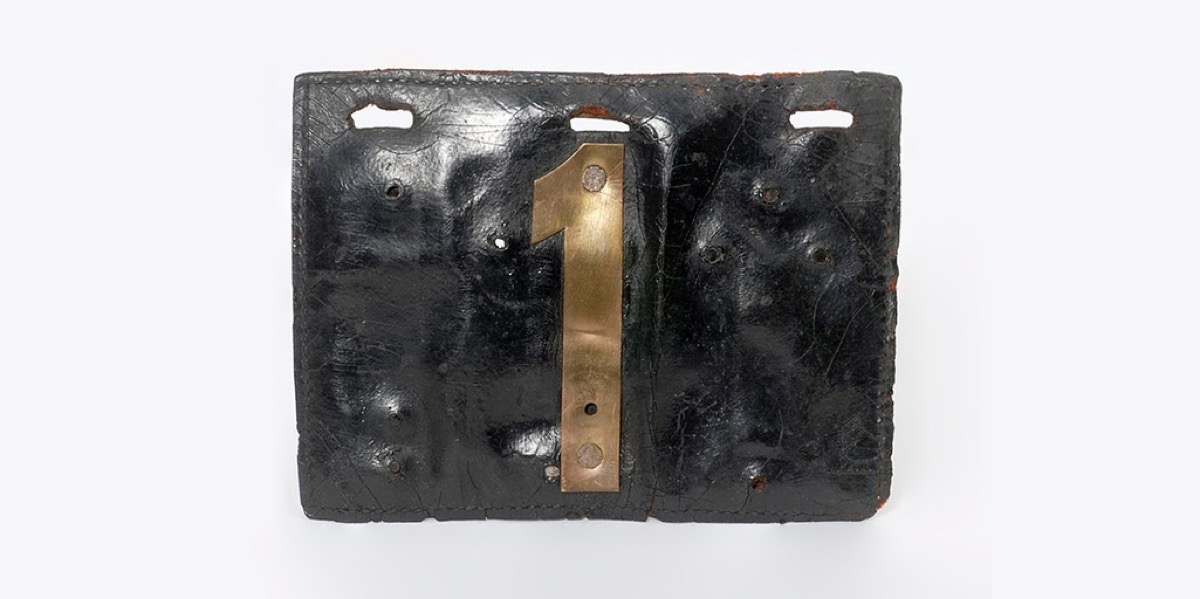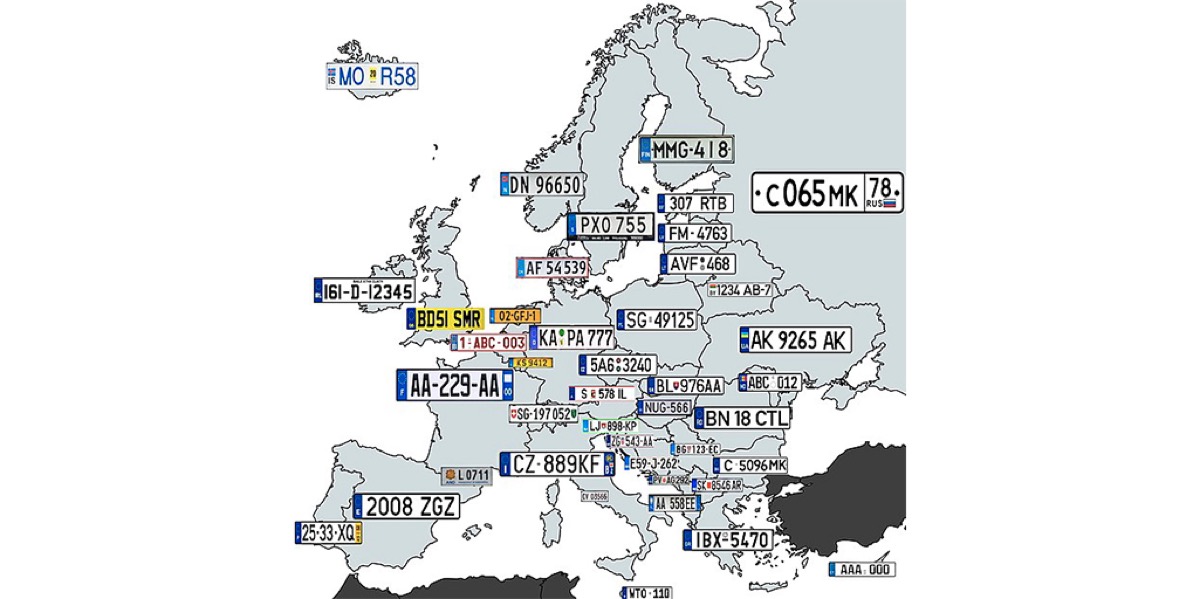White, blue, yellow, red, green… The license plates on cars are as varied as the world’s countries and legislations. Today we are highly accustomed to seeing them on the vehicles that move through the cities and the highways, but they weren’t always there.
When the automobile was invented, there were so few of them that it didn’t seem necessary to identify them with a license plate. Very, very few people had the means to buy a car, so it was easy to know who owned that noisy contraption that moved around without the help of horses.
But things got more complicated when those automobiles began to be mass-produced, their price went down and they became much more numerous. How was it possible to know who owned a car that was involved in an accident, for example, if they weren’t identified in some way? The solution was to find a system by which to identify with complete certainty both vehicle and owner. And that’s how license plates were born.
The first one in the world was issued in France in 1893, through the Paris Ordinance. Three years later, in 1896, the first car license plate was registered in Germany. In 1898, the Netherlands was the first country to introduce a national license plate, which they called a driving permit. These early license plates had a number beginning with 1, something that was maintained until 1906, when the system changed.

License plates in the United States
In 1901 all French vehicles had license plates. This system was being extended to other European countries. Now it was time to cross the pond to America.
The first license plates began in the United States that same year, although here things got a little complicated: each different state had its own automotive legislation. The first to impose license plates was New York, thanks to an order by governor Benjamin Odell Jr. But instead of being manufactured by an official body, it was the car owners themselves who had to make their license plate, by hand, out of pieces of leather or metal, indicating the owner of the vehicle by his initials. These plates had to be located on the rear end of the car. It wasn’t until 1909 that the state of New York began to issue official plates.
In Massachusetts, the first official plates were distributed in 1903. The first one, with the number 1, was issued in the name of Frederick Tudor. One of his descendants still maintains it with that same number.

Pennsylvania, for its part, became the first state to issue the first official license plate, in 1903, and thanks to this these identification plaques extended to many more states. Decades later, in 1931, it issued the first personalized license plate. It wasn’t quite like those that are seen today throughout the country, but it did include the owner’s initials among the numbers. Those highly personalized plates that we know today were created in 1965, and are an important source of government revenue, because the car owner must pay some extra fees.

Meanwhile, in Spain…
The gasoline automobile came to Spain at the end of the 19th century. It is thought that the first one was a Panhard Levassor imported from France to the northern region of Asturias in 1891.
While Spain may not have been a pioneer in the automotive industry, it was the first country to require a car license plate with letters and numbers, in 1900. Until then, the few cars only had a plaque with the coat of arms of the city they drove in. If they wanted to leave it, they had to put on a different license plate and pay the corresponding fee.
The first official Spanish license plate was issued in Palma de Mallorca in 1900, via the Regulations for the Service of Highway Automobiles. It was a Clement owned by Josep Sureda i Fuentes, a retired naval machinist, with the number PM-1. Months later, three other vehicles were registered, in Cáceres, Salamanca and Palma de Mallorca.
Those first Spanish license plates were manufactured in flat metal, with the numbers attached. Some time would have to pass until the aluminum version arrived, with the numbers integrated in relief into this material.

The first plates had double numbering: the digit of the town hall so as to be able to drive there, and the digit of the civil government, which allowed it to drive throughout the province where it was registered. The only information they gave was about the owner, but not the date on which it had been registered.
It was on May 24, 1907, when the registration system was modernized in a move toward unification. By then, the total number of vehicles in Spain had reached 1,000. The new system replaced the municipal number with two or three letters designating the province where it was registered. But soon there were problems. In some provinces, the number 13 was avoided, and on occasion there were duplications. How to distinguish Badajoz from Baleares if both began with ‘BA’? So the system had to be reformed. There would be a maximum of two letters, and the initials ME were used to designate Ceuta and Melilla, in North Africa. This method lasted until 1971.
Starting then, the car license plate began with the initial or initials of the province, four numbers, and a letter, until the alphabet was exhausted and two letters were added. That lasted until September of 2000, when a European license was imposed throughout the EU, which consists of four numbers and three letters, along with the European symbol and the letter E for España.
Digital car license plates
Since we’re in the digital era, it’s normal to suppose that it will also come to license plates.
For the moment, this kind of plate is permitted only in the United States –in California and Arizona, to be exact– along whose roads there are some 4,000 vehicles with this kind of identification.
The plates are designed by the Reviver company, and what they do is convert the letters and numbers into pixels on a digital screen similar to the ones used for electronic books.
These license plate/screens must be integrated into the car and can also display several messages, which must be approved, that communicate whether the car has been stolen or exhibit certain alerts.
But other digital systems, besides giving information about the vehicle and its owner, can also facilitate automatic payments, telemetry and information about the vehicle’s condition. On the down side is the high cost: the manufacture, installation and maintenance of the digital license plates ranges from 500 to 1,000 dollars, although it is hoped that these prices will drop when they become more popular.